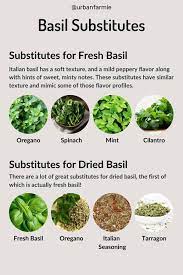Explore the magic of Italian cooking as we delve into the captivating world of a timeless classic – the Pomodoro sauce. This velvety, rich concoction has been adored by generations, enchanting palates with its vibrant flavors and soulful aromas. Embark on a culinary adventure as we unravel the secrets behind creating this exquisite tomato-based masterpiece, allowing you to elevate your dishes to new heights of gastronomic pleasure.
Within the depths of this tantalizing sauce lies a harmonious blend of nature’s bounty. Succulent tomatoes, plump with maturity and bursting with tanginess, are carefully handpicked to ensure the utmost quality. Each lovingly nurtured tomato lends its unique essence to the sauce, infusing it with a symphony of flavors that dance on your taste buds.
Enhancing the deep-rooted flavors of the tomatoes are an assortment of herbs and spices that embrace the sauce with their fragrant offerings. Delicate basil leaves, renowned for their vibrant aroma and slightly peppery undertones, intertwine effortlessly with the tomatoes, awakening the senses with their verdant allure. The sharp, pungent notes of garlic rise to prominence, lending a distinctive kick that ignites the taste buds. A dash of fiery red chili adds a dramatic twist, teasing the palate with its subtle heat.
The History and Origins of Pomodoro Sauce
The timeless and flavorful Pomodoro Sauce has a fascinating history spanning back centuries. This delectable tomato-based sauce has its roots deeply embedded in Mediterranean cuisine, with a rich and storied heritage that has been passed down through generations. Exploring the history and origins of Pomodoro Sauce allows us to delve into the culinary traditions of the Italian peninsula, unveiling a tale of creativity, cultural exchange, and culinary evolution.
Over the centuries, tomatoes have gained prominence in Italian cuisine, becoming an essential ingredient that adds depth and vibrancy to various dishes. The genesis of Pomodoro Sauce can be traced back to the discovery of tomatoes in the Americas during the 16th century. Native to South America, these luscious red fruits, unknown to Europeans until then, ignited a culinary revolution upon their introduction to Italy.
While tomatoes were initially met with skepticism due to their association with poisonous nightshade plants, their popularity gradually soared as people realized their incredible potential as a culinary ingredient. The first records of tomato-based sauces can be found in the late 18th century in Naples, where tomatoes were utilized in everything from soups to condiments.
As the tomato’s popularity continued to grow, the development of Pomodoro Sauce as we know it today gained momentum. Generations of Italian chefs and home cooks masterfully perfected the sauce, combining tomatoes with garlic, onions, fragrant herbs, and other regional ingredients. This gradual refinement resulted in the classic Pomodoro Sauce, known for its simplicity, versatility, and robust flavors.
The widespread popularity of Pomodoro Sauce solidified its place not only in Italian cuisine but also in the global culinary landscape. Thanks to Italian immigrants who brought their traditional recipes with them, Pomodoro Sauce traveled beyond Italy’s borders, captivating taste buds worldwide and becoming a beloved staple in countless kitchens.
Today, the history and origins of Pomodoro Sauce serve as a testament to the enduring legacy of Italian gastronomy. As we savor each spoonful of this timeless sauce, we not only indulge in a burst of flavors but also in centuries of culinary heritage that have helped shape our modern understanding and appreciation of Italian cuisine.
Ingredients and Tools Needed for Making Classic Tomato Sauce
In order to prepare a delicious and authentic Italian tomato sauce, you will need a carefully selected combination of ingredients and a few essential tools. These elements come together to create a flavorful sauce that can be used in a variety of dishes.
1. Tomatoes: Naturally, the main ingredient in tomato sauce is tomatoes. Look for ripe, juicy tomatoes with rich flavors. San Marzano tomatoes, known for their sweet and tangy taste, are a popular choice. You can use fresh tomatoes or canned tomatoes, depending on what is available and your preference.
2. Olive Oil: Olive oil is key for adding richness and depth to your sauce. Opt for extra virgin olive oil for a robust flavor. This ingredient serves as the base for sautéing the onions and garlic, which will enhance the overall taste of your sauce.
3. Onions: Onions provide a savory backbone to the sauce. Choose yellow or white onions and finely chop them to release their flavor. Sautéing the onions in olive oil allows their sweetness to develop, providing a delicious balance to the acidity of the tomatoes.
4. Garlic: Garlic adds a distinct aroma and flavor to the sauce. Use fresh garlic cloves and mince them finely. Sautéing the garlic along with the onions in olive oil will infuse the sauce with a warm and fragrant essence.
5. Herbs: Fresh herbs like basil, oregano, and parsley add vibrant and aromatic notes to your sauce. Chop the herbs finely before adding them to the sauce. The combination of these herbs will create a well-rounded and authentic Italian flavor profile.
6. Salt and Pepper: Season your sauce with salt and pepper to taste. These basic seasonings help to enhance the natural flavors of the other ingredients and bring out the best in your tomato sauce.
7. Red Wine (optional): For those looking to add a special touch, a splash of red wine can elevate the flavors of the sauce. Choose a dry red wine that complements the richness of the tomatoes without overpowering them.
Tools: Along with the ingredients, you will need a few essential tools to make your tomato sauce. These include a cutting board, a sharp knife for chopping the ingredients, a sauté pan or saucepan for cooking the sauce, a wooden spoon for stirring, and a blender or immersion blender for achieving a smooth consistency if desired.
By utilizing these ingredients and tools, you will be well on your way to preparing a delightful and classic tomato sauce that will elevate your Italian dishes to new heights.
Step-by-Step Instructions for Creating Authentic Pomodoro Sauce
In this section, we will guide you through the process of preparing a delicious and traditional Italian tomato sauce known as Pomodoro Sauce. By following these step-by-step instructions, you will be able to create a flavorful sauce that can be used as a base for various pasta dishes or as a standalone sauce for dipping and spreading.
- Gather fresh and ripe tomatoes. Look for firm, juicy tomatoes with vibrant colors.
- Prepare the tomatoes by removing the stems and lightly score an “X” on the bottom of each tomato.
- Bring a pot of water to a boil and carefully place the tomatoes in the boiling water for about 30 seconds.
- Remove the tomatoes from the boiling water and place them in a bowl of ice water to cool down quickly.
- Peel the tomatoes by gently pulling off the skin starting from the scored “X” mark.
- Cut the peeled tomatoes in half and remove the seeds using a spoon.
- Chop the tomatoes into small pieces, ensuring to collect any juices that may have accumulated.
- Heat a pan over medium heat and add olive oil, followed by diced onions and minced garlic. Sauté until the onions become translucent and the garlic is fragrant.
- Add the chopped tomatoes and their juices to the pan. Stir to combine with the onions and garlic.
- Season the sauce with salt, pepper, dried oregano, and a pinch of sugar to balance the acidity of the tomatoes.
- Reduce the heat to low and let the sauce simmer for about 30 minutes, stirring occasionally.
- Taste the sauce and adjust the seasoning if needed. You can add more salt, pepper, or herbs according to your preference.
- Remove the pan from the heat and let the sauce cool slightly before transferring it to a blender or using an immersion blender to puree it to your desired consistency.
- Once blended, return the sauce to the pan and simmer for an additional 10 minutes to allow the flavors to meld together.
- Your authentic Pomodoro Sauce is now ready to be enjoyed! Serve it over your favorite pasta or use it as a dipping sauce for bread.
By following these step-by-step instructions, you can create a homemade Pomodoro Sauce that captures the true essence of Italian cuisine. Experiment with different herbs and spices to personalize the sauce even further. Enjoy the rich flavors and aromas of this traditional Italian tomato sauce!
Tips and Tricks for Enhancing Flavors in a Pomodoro Sauce
When it comes to creating a delicious and flavorful Pomodoro sauce, there are several tips and tricks that can take your sauce to the next level. These techniques and ingredients will help enhance the natural flavors of the tomatoes and create a truly memorable sauce that will impress your family and friends.
1. Slow Roasting Tomatoes
One way to intensify the flavors in your Pomodoro sauce is to slow roast the tomatoes. By roasting them low and slow, the tomatoes develop a rich, sweet flavor that adds depth to the sauce. To do this, slice ripe tomatoes in half, drizzle with olive oil, sprinkle with salt and pepper, and roast in the oven at a low temperature until they are soft and caramelized.
2. Fresh Herbs and Spices
Using fresh herbs and spices can make a world of difference in the flavor of your Pomodoro sauce. Consider adding a handful of fresh basil leaves, chopped parsley, or oregano to the sauce for an aromatic and herbaceous taste. Additionally, adding a pinch of red pepper flakes or a dash of dried Italian seasoning can add a subtle heat and complexity to the sauce.
| Tip | Description |
|---|---|
| 1 | Slow roast tomatoes to intensify their flavors and add depth to the sauce. |
| 2 | Use fresh herbs like basil, parsley, or oregano, and spices like red pepper flakes or Italian seasoning to enhance the sauce’s taste. |
By applying these tips and tricks, you can elevate the flavors of your Pomodoro sauce and create a culinary masterpiece that will have everyone begging for seconds. Don’t be afraid to experiment with different herbs, spices, and cooking techniques to find your perfect balance of flavors.
Serving Suggestions and Pairings for Tomato Basil Sauce
Discover delightful ways to enhance your meals with the aromatic flavor of tomato basil sauce. From classic pasta dishes to delectable appetizers, there are endless possibilities to showcase the versatility of this authentic Italian sauce.
1. Pasta Perfection:
- Elevate your pasta game by pairing tomato basil sauce with al dente spaghetti or linguine.
- For a burst of freshness, toss the cooked pasta with a handful of chopped basil leaves and grated Parmesan cheese.
- If you prefer a creamier texture, swirl in a dollop of ricotta cheese or add a dash of heavy cream to the sauce.
2. Bruschetta Sensation:
- Transform a simple baguette into a crowd-pleasing appetizer by spreading a generous amount of tomato basil sauce on each slice.
- Top with fresh mozzarella cheese and a sprinkle of basil, then broil until the cheese is melted and bubbly.
- For added flavor, drizzle with a balsamic glaze and serve with a side of mixed greens.
3. Meatball Delight:
- Intensify the flavor of your meatballs by simmering them in tomato basil sauce.
- For a twist, blend in some finely chopped sun-dried tomatoes or roasted red peppers into the meat mixture before shaping the meatballs.
- Serve the meatballs with a generous spoonful of sauce and sprinkle with grated Parmesan cheese.
4. Grilled Panini:
- Create a mouthwatering panini by spreading tomato basil sauce on your favorite bread.
- Add layers of sliced mozzarella cheese, fresh basil leaves, and slices of grilled chicken or vegetables.
- Grill the panini until golden and crispy, and serve with a side of mixed greens or a cup of tomato basil soup.
5. Pizza Party:
- Turn your pizza night into a gourmet experience by using tomato basil sauce as the base.
- Top with your favorite cheese, vegetables, and meats, and bake until the crust is golden and the cheese is bubbly.
- Before serving, garnish with a drizzle of olive oil and a sprinkle of fresh basil leaves for an extra burst of flavor.
Whether you’re cooking for family, friends, or yourself, these serving suggestions and pairings will elevate your meals to new heights with the vibrant flavors of tomato basil sauce. Get creative and enjoy the delicious possibilities!
Common Mistakes to Avoid When Making Pomodoro Sauce
When preparing a delicious tomato sauce, it’s important to be aware of the common mistakes that can hinder the final result. By avoiding these pitfalls, you can ensure that your pomodoro sauce turns out flavorful and authentic.
1. Overcooking the tomatoes
One of the most common mistakes when making pomodoro sauce is overcooking the tomatoes. This can lead to a sauce that is overly thick and lacks the fresh, vibrant flavors of the tomatoes. Instead, aim for a gentle simmer to preserve the natural taste and texture of the tomatoes.
2. Using low-quality tomatoes
The quality of the tomatoes used in pomodoro sauce is paramount. Using low-quality tomatoes can result in a sauce that lacks the desired sweetness and depth of flavor. Opt for vine-ripened or San Marzano tomatoes, which are known for their rich flavor and vibrant red color.
Additionally, avoid using canned tomato products that are high in sodium or contain added preservatives, as these can alter the taste of the sauce.
| Mistake | Solution |
|---|---|
| Overcooking the tomatoes | Simmer the sauce gently to preserve the natural flavors. |
| Using low-quality tomatoes | Choose vine-ripened or San Marzano tomatoes for the best flavor. |
By avoiding these common mistakes, you can elevate your pomodoro sauce to a new level of authenticity and ensure a truly delicious outcome. Happy cooking!
Q&A: Pomodoro sauce
How can I make a homemade marinara sauce in a large pot and store it properly?
To make a homemade marinara sauce in a large pot, start by heating 2 tablespoons of olive oil over medium heat. Add 1 finely chopped onion and sauté until translucent, about 5 minutes. Add 4 minced garlic cloves and cook for another minute. Stir in two 28-ounce cans of crushed tomatoes, 1 tablespoon of tomato paste, 1 teaspoon of dried oregano, 1 teaspoon of dried basil, 1/2 teaspoon of salt, and 1/4 teaspoon of black pepper. Bring the sauce to a simmer and let it cook for 30-45 minutes, stirring occasionally. If you prefer a thicker marinara sauce, let it simmer uncovered for an additional 15-20 minutes. Once done, let the sauce cool slightly, then transfer it to an airtight container and refrigerate for up to a week or freeze for up to 3 months.
What is the best way to thicken a marinara sauce without altering its flavor?
The best way to thicken a marinara sauce without altering its flavor is to let it simmer uncovered in a large pot. Start by preparing your marinara sauce as usual, and once it begins to simmer, reduce the heat to low. Allow the sauce to simmer uncovered for 30-45 minutes, stirring occasionally, until it reaches your desired consistency. This method allows the excess liquid to evaporate naturally, thickening the sauce without adding any additional ingredients. If you need to store the sauce, let it cool completely before transferring it to an airtight container and refrigerate or freeze as needed.
What’s the difference between pomodoro sauce and marinara sauce, and how is each typically used?
The difference between pomodoro sauce and marinara sauce lies in their texture and cooking time. Pomodoro sauce, which means “tomato” in Italian, is a smooth, velvety sauce made by cooking fresh or canned tomatoes until they break down into a thick consistency. It’s typically used for dishes like spaghetti al pomodoro, where a rich, simple tomato flavor is desired. Marinara sauce, on the other hand, is a bit chunkier and quicker to cook. It often includes additional ingredients like onions, garlic, and herbs, making it a more complex sauce that can be used for pasta dishes, as well as a base sauce for pizza and other Italian recipes.
How can I make a simple pasta pomodoro sauce using fresh Roma tomatoes?
To make a simple pasta pomodoro sauce using fresh Roma tomatoes, start by bringing a large pot of water to a boil. Blanch 10 Roma tomatoes for 30 seconds, then transfer them to an ice bath to cool. Peel the tomatoes, remove the seeds, and chop them finely. In a large pan, heat 2 tablespoons of olive oil over medium heat, then add 4 minced garlic cloves and sauté until fragrant. Add the tomatoes to the pan along with a pinch of salt and simmer for 20-25 minutes until the sauce thickens. Stir in fresh basil leaves during the last 5 minutes of cooking. Cook the pasta in a large pot of salted water until al dente, drain the pasta, and toss it with the pomodoro sauce. This simple pasta dish is perfect for an easy meal.
What’s the difference between pomodoro and spaghetti sauce, and which one is more versatile?
The difference between pomodoro and spaghetti sauce lies primarily in their ingredients and consistency. Pomodoro sauce is a simple, smooth tomato sauce made with fresh or canned tomatoes, olive oil, garlic, and basil. It’s typically used for pasta dishes like pasta pomodoro. Spaghetti sauce, often synonymous with marinara, includes more ingredients like onions, garlic, and herbs, and is typically chunkier. Pomodoro sauce is often smoother and more refined, while spaghetti sauce can be more robust and versatile, making it suitable for various Italian dishes such as pasta, pizza, and meatball subs. Both are classic Italian tomato sauces, but spaghetti sauce tends to have a wider range of applications due to its richer flavor profile.
How can I make an easy Italian tomato sauce recipe perfect for pasta or as a base sauce for other dishes?
To make an easy Italian tomato sauce recipe perfect for pasta or as a base sauce for other dishes, heat 2 tablespoons of olive oil in a large pot over medium heat. Add 1 finely chopped onion and 4 minced garlic cloves, sautéing until they are soft and fragrant. Add two 28-ounce cans of canned San Marzano tomatoes, crushing them with your hands as you add them to the pot. Stir in 1 teaspoon of salt, 1 teaspoon of sugar, and a pinch of red pepper flakes. Let the sauce simmer for 30-40 minutes until it thickens slightly. If you prefer a smoother sauce, use an immersion blender to puree the sauce until smooth. This simple recipe can be used as a delicious base sauce for pasta, pizza, or other Italian dishes.
What are the steps to making a classic spaghetti al pomodoro, and how do you ensure the sauce is perfectly balanced?
To make a classic spaghetti al pomodoro, start by bringing a large pot of salted water to a boil. Cook the pasta until al dente, then drain and set aside. In a large pan, heat 2 tablespoons of olive oil over medium heat and add 3 minced garlic cloves. Sauté until fragrant, then add a can of San Marzano tomatoes, crushed by hand, along with their juices. Simmer the sauce for 20-25 minutes, allowing it to thicken slightly. Season with salt and pepper to taste. Add the cooked pasta to the sauce along with a splash of pasta water to help bind the sauce to the pasta. Toss well to combine and finish with fresh basil leaves. To ensure the sauce is perfectly balanced, taste and adjust the seasoning as needed. This classic Italian tomato sauce recipe is simple and delicious, perfect for a quick and easy meal.




